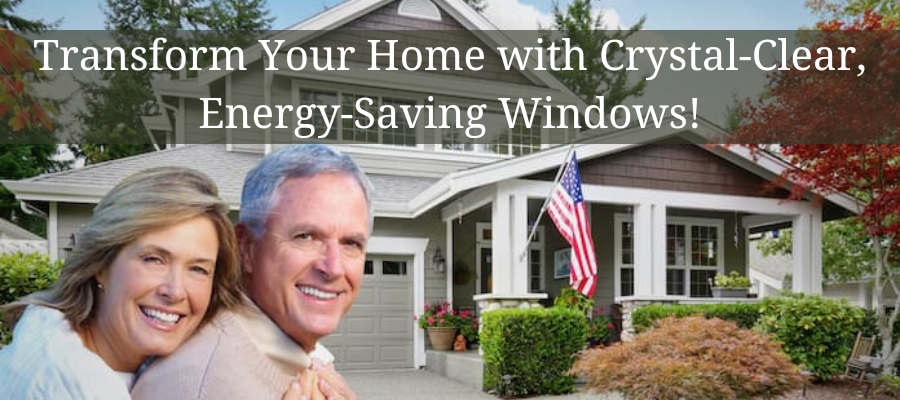Casement windows are a distinctive style that hinge on the side and swing outward, providing not just a picturesque view but also facilitating maximum ventilation. They stand out as the only window that can open completely, akin to a door for your house, offering an unobstructed aperture to the world outside. Casement windows are equipped with a seal around the perimeter that tightens when closed, enhancing energy efficiency and superior weather resistance compared to some other window styles.

Choosing the right style of window can transform the ambiance and functionality of your space. Casement windows, known for their ability to funnel breezes into your home, can enhance room comfort significantly. This makes them especially suited for areas where airflow is a priority. In addition, their clean, unobstructed views can complement beautiful properties and provide an aesthetic bridge to the outdoors. When customizing, a wide array of colors, grids, and hardware options enables personalization to match any decor.
However, casement windows may not suit every home or homeowner’s needs. It’s important to consider the location, as their outward swing can be obstructed by external features. On upper floors, cleaning can be more challenging unless in-swing options are chosen. You should also factor in the window’s maintenance and lifespan, which are contingent on the manufacturer’s quality and proper upkeep.
Key Takeaways
- Casement windows offer full opening for ventilation and unobstructed views.
- Personalization options and ease of operation make them a versatile choice.
- Consider space and maintenance requirements to ensure suitability for your home.
Understanding Casement Windows

Casement windows are a popular choice if you’re looking for ventilation and unobstructed views. They represent a blend of functionality and aesthetic appeal that suits various architectural styles.
Definition and Design
Casement windows are characterized by their hinged design. Typically, these hinges are located on the side of the window frame, although top-hung variations are also common. Here’s what you need to know about their design:
- Sashes and Frames: They have a sash, which is a movable panel holding the glass, encompassed by a stationary frame.
- Variety of Styles: You can find casement windows in different styles, from classic to contemporary, and they can include features such as grilles or different hardware finishes for aesthetic enhancement.
Mechanism and Operation
The mechanism of casement windows is straightforward, which makes them simple to operate. Here’s how they work:
- Opening and Closing: By turning a crank handle, you can swing the window sash open and closed.
- Sealing and Security: When closed, casement windows offer a tight seal for improved energy efficiency and security.
- Ventilation: Due to the full sash opening, these windows provide top-notch ventilation, best used in areas where airflow is desired.
Benefits of Casement Windows

Casement windows offer distinct advantages that cater to the aesthetics of your home, as well as functional benefits like improved ventilation and energy efficiency.
Aesthetic Appeal
Casement windows provide a touch of elegance with their sleek design. Your choice in colors, grids, and hardware can range from bold hues to subtle woodgrains, complementing your home’s style uniquely.
Ventilation and Airflow
With casement windows, you enjoy the luxury of full window opening, which isn’t possible with most other window types. As they open outward, like a door, they catch and direct breezes inside, enhancing the airflow in your space.
Energy Efficiency
Choosing casement windows contributes to lower energy bills due to their design that seals tightly against the frame when closed. This helps prevent air leakage, making them great for energy conservation. Advanced features like low-emissivity (low-E) glass further bolster their efficiency, reducing energy costs over time.
Considerations When Choosing Casement Windows

When selecting casement windows for your home, you should carefully consider the materials used, their maintenance needs, and how well they integrate with your home’s design and functionality.
Material and Durability
Casement windows come in a variety of materials, each with distinct durability and aesthetic appeal.
- Wood: Offers a classic look and good insulation but requires regular maintenance to prevent rot and warping.
- Vinyl: Provides excellent energy efficiency and is low maintenance, but may not be as strong as other materials.
- Aluminum: Known for its strength and durability, it’s less energy-efficient than wood or vinyl unless it includes a thermal break.
- Fiberglass: Combines low maintenance with high durability and is energy efficient, but can be more expensive.
Maintenance Requirements
Your casement windows’ longevity largely hinges on regular maintenance.
- Lubrication: Hinges and cranks should be lubricated annually to ensure smooth operation.
- Cleaning: Windows should be accessible for cleaning; in-swing styles or windows with removable sashes are easier to clean from inside your home.
- Inspections: Check seals and weather stripping periodically to maintain energy efficiency and prevent leaks.
Compatibility with Your Home
Choosing a casement window also depends on its compatibility with the style and functional needs of your home.
- Architectural Style: Ensure the casement window design complements your home’s aesthetic. For example, traditional homes may benefit from wood frames with a classic finish.
- Ventilation: Casement windows are ideal for areas where airflow is desired since they can fully open outward or inward.
- Space: Note the space where the window will open; casement windows require ample space to operate, which could be an issue in tight exterior areas.
Potential Drawbacks

While casement windows can be a great addition to your home, it’s essential to consider some of their potential drawbacks before making your decision.
Cost Implications
Casement windows typically come at a higher cost compared to other styles like double-hung or slider windows. The complexity of their design and the hardware involved can add to the overall expense. Installation costs may be higher too, as these windows often require professional fitting to ensure they function correctly and provide optimal energy efficiency.
Limitations in Placement
You should think carefully about where to install your casement windows. Due to their outward swinging sash, they’re not ideal next to walkways or areas where they could obstruct movement. Additionally, casement windows may not fit every architectural style, and changing from a different window style to a casement window might require structural modifications to your home.
Security Concerns
Despite many casement windows having excellent locking mechanisms, the fact that they open outward can sometimes pose a security risk. When left open, they could be more accessible to potential intruders. To mitigate this risk, ensure that you invest in casement windows with multiple locking points and consider their placement thoughtfully in your home to enhance security.
Frequently Asked Questions

When considering new windows for your home, casement windows often come up as a popular option. Below, you’ll find answers to common queries to help you determine if they’re the right fit for your needs.
What should I consider when deciding between casement and double-hung windows?
You should consider factors such as ventilation, view, ease of use, and space constraints. Casement windows are hinged at the side and open outward with a crank, providing top-to-bottom ventilation and unobstructed views. Double-hung windows slide up and down; while they allow for ventilation from either the top or bottom of the window, the view can be slightly obstructed by the sash.
Can you explain the main advantages of using casement windows in a home?
Casement windows offer excellent ventilation, as they can capture side breezes due to their ability to open completely. They’re also known for providing a clear, unobstructed view and can be more secure due to the hook-shaped casement window locks that are embedded into the frame.
What are some common drawbacks of installing casement windows?
Some drawbacks include their need for outdoor space to open fully, making them less suitable near patios or walkways. Since they crank open, the mechanical parts may need maintenance or replacement over time. They’re generally also more expensive than other window types.
How does the installation complexity of casement windows compare to other styles?
The installation complexity of casement windows is generally on par with other window types but may require more precision due to their operational mechanics like the crank system. Proper installation is crucial to ensure a tight seal when closed and smooth operation.
In what scenarios might casement windows not be the best choice for a homeowner?
Casement windows may not be ideal if your windows open directly onto public areas, where they could obstruct walkways or be a hazard. If there’s limited space outside or if your region experiences high winds, casement windows may be damaged more easily since they open outward.
What are the potential benefits in terms of ventilation and natural light with casement windows?
These windows offer top-notch ventilation possibilities. They are capable of funneling breezes into your home.
Their design allows for the entire window to be opened. This ushers in maximum natural light and airflow. This is compared to other window types that may only partially open.






